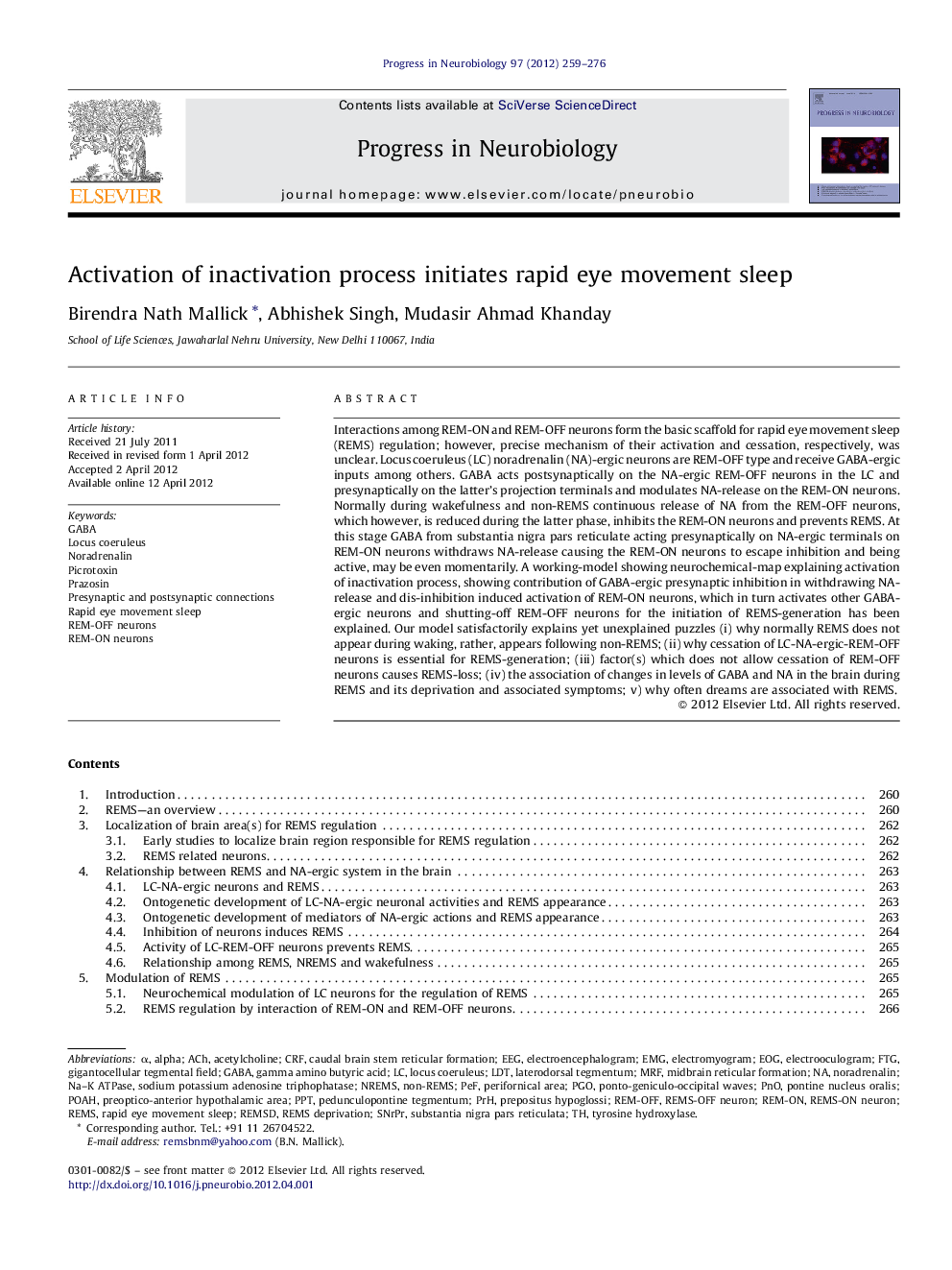| Article ID | Journal | Published Year | Pages | File Type |
|---|---|---|---|---|
| 4353460 | Progress in Neurobiology | 2012 | 18 Pages |
Interactions among REM-ON and REM-OFF neurons form the basic scaffold for rapid eye movement sleep (REMS) regulation; however, precise mechanism of their activation and cessation, respectively, was unclear. Locus coeruleus (LC) noradrenalin (NA)-ergic neurons are REM-OFF type and receive GABA-ergic inputs among others. GABA acts postsynaptically on the NA-ergic REM-OFF neurons in the LC and presynaptically on the latter's projection terminals and modulates NA-release on the REM-ON neurons. Normally during wakefulness and non-REMS continuous release of NA from the REM-OFF neurons, which however, is reduced during the latter phase, inhibits the REM-ON neurons and prevents REMS. At this stage GABA from substantia nigra pars reticulate acting presynaptically on NA-ergic terminals on REM-ON neurons withdraws NA-release causing the REM-ON neurons to escape inhibition and being active, may be even momentarily. A working-model showing neurochemical-map explaining activation of inactivation process, showing contribution of GABA-ergic presynaptic inhibition in withdrawing NA-release and dis-inhibition induced activation of REM-ON neurons, which in turn activates other GABA-ergic neurons and shutting-off REM-OFF neurons for the initiation of REMS-generation has been explained. Our model satisfactorily explains yet unexplained puzzles (i) why normally REMS does not appear during waking, rather, appears following non-REMS; (ii) why cessation of LC-NA-ergic-REM-OFF neurons is essential for REMS-generation; (iii) factor(s) which does not allow cessation of REM-OFF neurons causes REMS-loss; (iv) the association of changes in levels of GABA and NA in the brain during REMS and its deprivation and associated symptoms; v) why often dreams are associated with REMS.
► Wake and NREMS-related neurons are reciprocally connected; they exert opposite influence on REM-OFF and REM-ON neurons. ► During waking and NREMS, LC-REM-OFF neurons are active, which inhibit REM-ON neurons and prevent appearance of REMS. ► GABA acting pre-synaptically on REM-OFF terminals stops NA release, resulting dis-inhibition/activation of REM-ON neurons. ► Active REM-ON neurons trigger GABA-induced cessation of REM-OFF neurons initiating REMS—A neural network has been modelled. ► Model satisfactorily explains mechanism of simultaneous cessation of REM-OFF and activation of REM-ON neurons during REMS.
